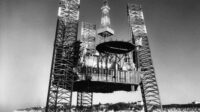Environmental technology market to reach $1.2 trillion by 2032
The environmental technology market is witnessing unprecedented growth due to rapid global industrialization and corporate sustainability initiatives

Allied Market Research recently published a new report. According to the report, the environmental technology market was valued at $0.7 trillion in 2022 and is estimated to reach $1.2 trillion by 2032, exhibiting a CAGR of 5.1% from 2023 to 2032.
Prime determinants of growth
The growth of the environmental technology market is primarily influenced by stringent government regulations, climate change concerns, technological advancements, rise in consumer demand, and resource scarcity. These factors collectively drive innovation and adoption of environmental technologies to address environmental challenges and promote sustainability.
Report Coverage |
Details |
Forecast Period |
2023–2032 |
Base Year |
2022 |
Market Size in 2022 |
$0.7 trillion |
Market Size in 2032 |
$1.2 trillion |
CAGR |
5.1 % |
No. of Pages in Report |
360 |
Segments covered |
Component, Application, Consumer, and Region. |
Drivers |
• Increase in awareness about the global water crisis. • Growth in demand for resource recovery |
Opportunities |
• Increase in demand for renewable energy sources |
Restraints |
• Inconsistent government regulations |
Impact Scenario
An economic recession has various impacts on the environmental technology market.
- Economic crises create uncertainty and market instability, leading to increased price volatility.
- Fluctuations in demand and investor sentiment contribute to greater price swings on trading platforms.
- Economic recessions can affect investment, consumer behavior, and government spending in ways that have a pronounced impact on the adoption and growth of environmental technologies. However, the specific impact varies depending on the severity and duration of the recession and the response of governments and industries.
- In addition, governments often intervene during economic crises to stimulate economic growth. These interventions include changes to environmental policies and regulations, directly impacting the market. Such policy changes have significant effects on the environmental technology market.
The services segment is expected to maintain its dominance throughout the forecast period.
By component, the services segment held the highest market share in 2022, accounting for nearly two-thirds of the global environmental technology market revenue, and is estimated to maintain its leadership status throughout the forecast period. Environmental services refer to the expertise, guidance, and support offered by professionals and organizations to help others address environmental challenges, comply with regulations, and improve sustainability practices.
However, the solutions segment is projected to witness a CAGR of 5.8% from 2023 to 2032, as this type of environmental solutions came into view due to harsh and strict regulations of government organizations to reach their zero-emission targets.
The solid waste management application segment to maintain its dominance throughout the forecast period.
By application, the solid waste management segment held the highest market share in 2022, accounting for more than one-third of the global environmental technology market revenue, and is estimated to maintain its leadership status throughout the forecast period. It can be adjusted over time to respond to changes in emission reduction targets, technological advancements, and economic conditions.
However, the environmental monitoring segment is projected to witness a CAGR of 5.6% from 2023 to 2032, as monitoring air quality provides data on pollutants, such as particulate matter (PM), volatile organic compounds (VOCs), and nitrogen oxides (NOx), which impact public health and contribute to climate change. They play essential roles in enhancing efficiency, safety, and environmental sustainability in their respective applications.
The industrial segment is expected to maintain its leadership status throughout the forecast period
By consumer, the industrial held the highest market share in 2022, accounting for more than two-fifths of the global environmental technology market revenue, and is estimated to maintain its leadership status throughout the forecast period. Industrial processes often generate significant waste. Environmental technologies enable efficient waste management, recycling, and waste-to-energy conversion, reducing landfill use and promoting a circular economy.
However, the residential segment is projected to manifest a CAGR of 4.9% from 2023 to 2032, owing to the stringent regulations and safety standards imposed on these industries.
For Purchase Inquiry: https://www.alliedmarketresearch.com/environmental-technology-market/purchase-options
Europe to maintain its dominance by 2032
By region, Europe held the highest market share in terms of revenue in 2022, accounting for more than one-third of the global environmental technology market revenue, and is expected to dominate the market during the forecast period. Furthermore, the Asia-Pacific region is expected to witness the fastest CAGR of 6.3% from 2023 to 2032. The Asia-Pacific region presents significant growth potential in environmental technology. Emerging markets, such as India, China, and Southeast Asian countries, have witnessed rapid industrial growth, which are expected to lead to increased demand for environmental technology.
Leading Market Players: -
- Clean Harbors Inc.
- Ecolab Inc.
- Covanta Holding Corporation
- Xylem
- IDEX Corporation
- Waste Management
- Veolia
- Suez
- AECOM
- Engie Impact
The report provides a detailed analysis of the key players in the global environmental technology market. These players have adopted different strategies such as new product launches, collaborations, expansion, joint ventures, agreements, and others, to increase their market share and maintain dominant shares in different regions. The report is valuable in highlighting business performance, operating segments, product portfolio, and strategic moves of market players to highlight the competitive scenario.


.jpg?height=200&t=1664821385&width=200)
.jpg?height=200&t=1720617285&width=200)